Even more since Disney produced Coco, not only an awesome movie but a magnificent way to integrate culture in a fun story for all audiences.
So... how do we celebrate Day of the Dead in our Spanish classes?
Here are some ideas!
1 What's the Day of the Dead? (Spanish 1 - Full lesson with video)
Let's start from the beginning.
Spanish 1 & above students will learn what this celebration is about as well as when, where and how it is celebrated.
This full lesson icludes a warm-up activity, a short reading text and several exercises, and a video with real (but easy) interviews, filmed during the celebration of El Da de Muertos.
There's also a self-grading quiz about the video that you can assign your students.
After working on the activities and the video, your students will build a cute photo frame about a Hispanic champion.
There are 20 different people to choose from in the template, and super easy-to-follow instructions that students can read by themselves on FlippedSpanish.
When they finish this craft, students will describe it using what they've learnt in the lesson, and they can also research and describe the person in their photo frame.
2 Hacemos una ofrenda (Spanish 2 - Full lesson with video)
We tried to build an ofrenda in our classes a few years ago and it was an epic failure.
Some students had recently lost a family member, and they didn't feel like talking about honoring the dead.
What's our solution?
A lesson in which we describe ofrendas, but we don't connect them to our dear ones.
Instead, we use the photos from ¿Qué es el día de muertos? to build ofrendas for famous Hispanic champions: Frida Kahlo, Diego Rivera, Cantinflas, Mario Molina...
Students will choose the elements thy'd like to add to the ofrenda, and they'll understand why and where they should go.
The result will be beautiful altars that your students will be able to describe.
3 How do Mexicans REALLY celebrate the Day of the Dead? (Spanish 3 - Full lesson with video)
Do Mexicans celebrate el Día de Muertos at home? Or do they go to the cemeteries? Or both?
Do they paint their faces or wear any kind of costumes?
What do they exactly do when they get together and party?
These are questions we are not ready to answer, but we can get your students ready to understand the answers from real Mexicans who are celebrating the Day of the Dead.
A complete lesson about how el Día de Muertos is celebrated, with authentic interviews and many activities to help your students get the most from the 4:55 video.
4 El diseño de La Catrina (AP Spanish - Full lesson with video)
In most cultures, Death is dark, serious and super scary.
Mexicans, however, represent it with colorful and cheerful skulls.
Why?
Your students will find out in El diseño de La Catrina, a full lesson about Diego Rivera's influence in the celebration of the Day of the Dead.
5 Organize your lesson with a KWL chart
Your students will sure have some previous knowledge about Day of the Dead.
They might have covered this celebration in previous years, or -most likely- they've watched Coco.
The Día de los Muertos warm-up is a great starting point to get an idea about what students already know, and what they'd like to learn.
Once we discuss that, we can move to any of the resources listed below to see if we find the answers to those questions students want to learn about.
We'll get back to this warm-up at the end of the lesson, to reflect on what they've learnt and check whether we know the answers to the things we wanted to learn.
We might need to do some further research, which will be an even better way to end the class.
Let's see who finds the answers to the unresolved questions and can share them with the class tomorrow!
6 A fun (yes, fun!) worksheet about Day of the Dead
We know worksheets are usually not fun, and often seen by students as busy work.
This is not the case.
Not at all.
Why? Because this worksheet has a link to El latido de mi corazón, one of the songs from Coco. Students will watch the videoclip to learn key words about Día de Muertos such as calaverita, flor, papel picado or vela.
Then, they will learn why those objects are used to build an altar, what each of them represents.
The last activity will consist on labelling the elements on an ofrenda.
That image can be used to build your own altar (or altares): just assign some elements to each student so they bring them to class and you can build together your own ofrendas in the classroom.
7 Cultural comparison: Halloween and Day of the Dead
The materials listed about will teach your students what Day of the Dead is about.
They'll be able to build an ofrenda and explain the meaning of the different objects.
Add some guacamole and music and you have a real Mexican party.
How do we end the lesson?
An altar contest could be a great idea.
Completing the KWL warm-up activity of the first activity listed in this post would also be perfect.
Another suggestion is to compare Halloween and Day of the Dead.
For Halloween ideas, take a look a these resources.
To compare both traditions, use the Halloween y Día de Muertos free warm-up activity, in the Celebraciones section.


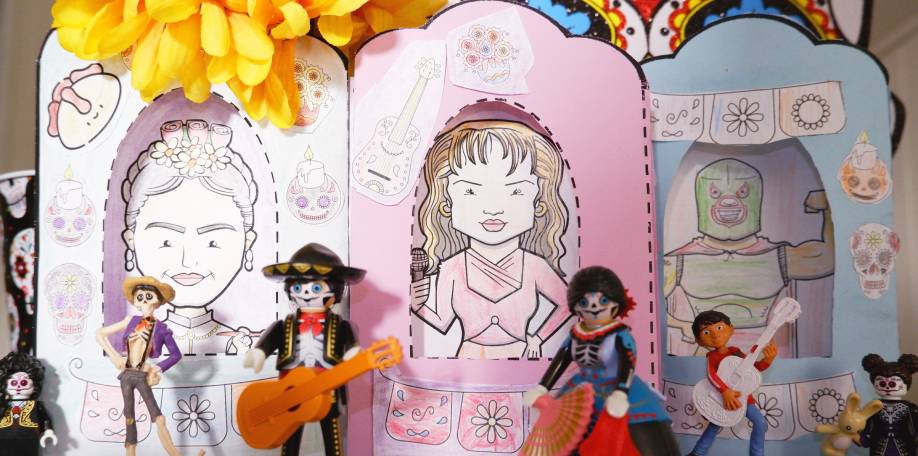
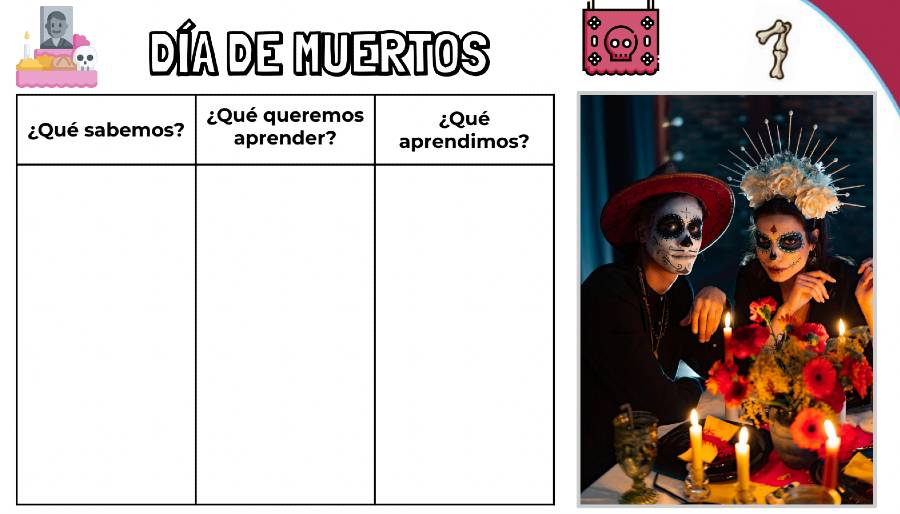
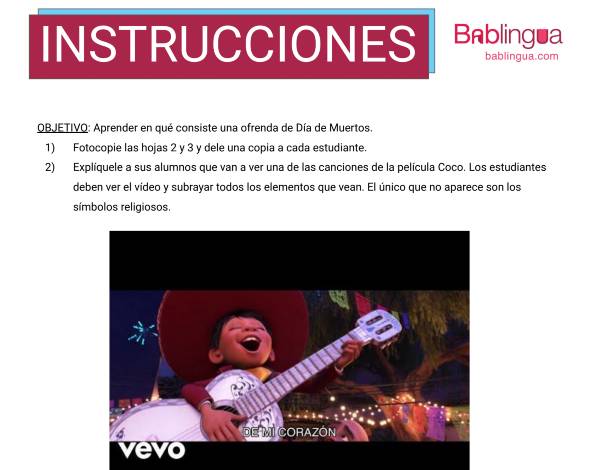
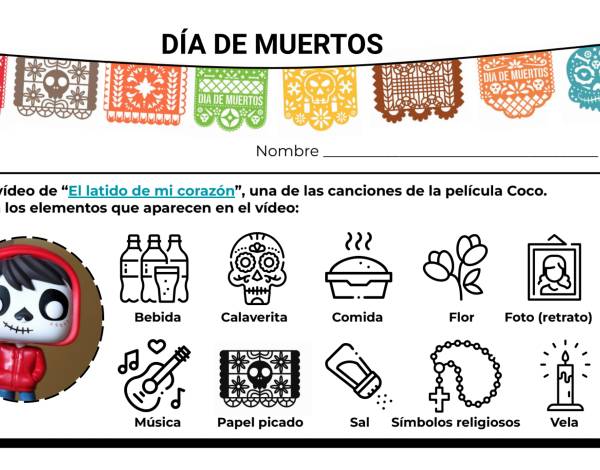
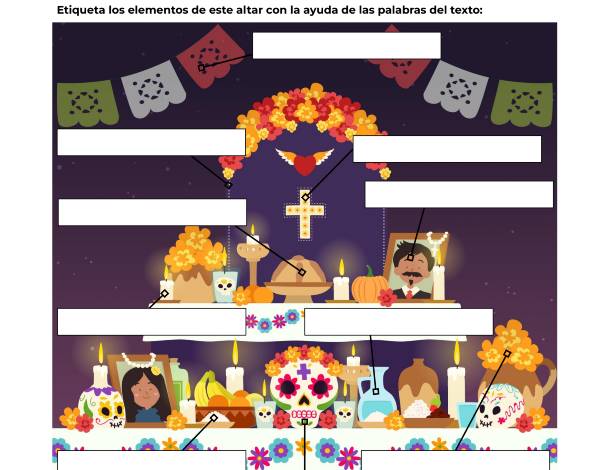
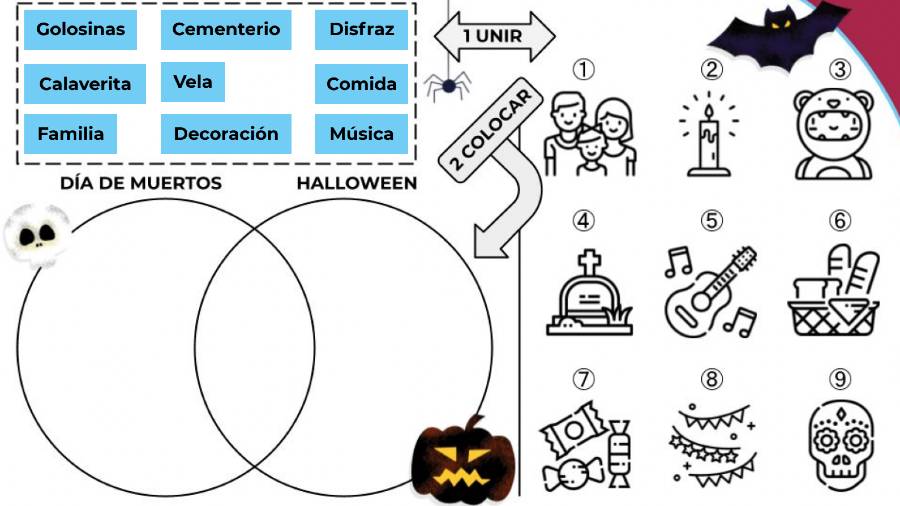
2 Comments on “Día de Muertos”
I am interested in the fun activities of Día de Los Muertos. Thank you.
Absolutely Hui Ma, thanks for your message. The first and last activities listed above are completely free.
To take a look at the others, you can request a free trial here: https://bablingua.com/free-trial/